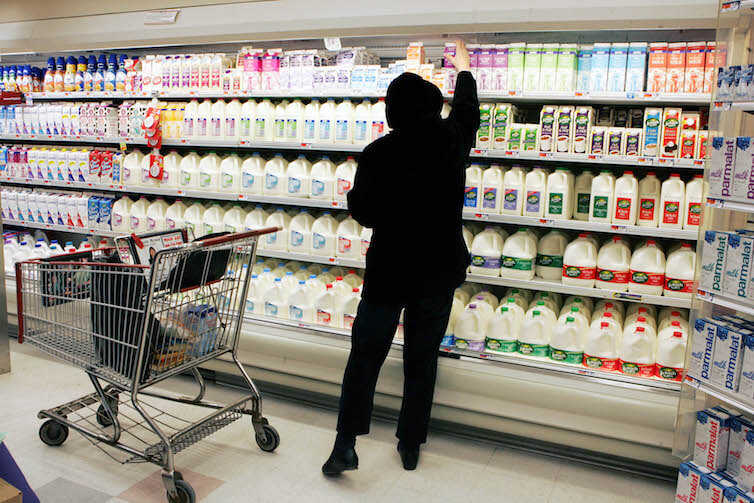No one measure of inequality tells the whole story–income, wealth, and consumption should be considered together

The Bureau of Labor Statistics, or BLS, releases the results of its annual Consumer Expenditure Survey, or CEX, today. This survey asks people to report their spending in dozens of categories, giving us a rich picture of what goods people are spending their money on. It is the only official source of data that allows us to track consumption inequality in the economy. Most of the public attention on inequality has been focused on income inequality: the distribution of what people earn. But economists actually consider two additional types of inequality—consumption inequality and wealth inequality.
Considering all three types of inequality holistically is important if we are to understand inequality in the United States. Income matters, certainly, but partisans of looking at consumption inequality argue that being able to buy essentials is a closer measure of a person’s well-being. Rising income inequality shouldn’t concern us too much, they argue, if consumption inequality is not rising with it. Stable consumption inequality suggests that the poor have no lost ground compared to the rich in overall well-being. As one proponent of this view rather memorably put it, “We eat bread, not paychecks.”
Unfortunately, consumption inequality has generally been the most difficult to measure due to the difficulty of collecting good data. Some studies based on the CEX have suggested that consumption inequality is not increasing in time with income inequality, or is increasing more slowly, while others show it increasing at the same rate. These contradictory findings are attributable to several known flaws with the survey.
Because the survey has a relatively small sample size, it can’t tell us much about the very richest earners. This is a problem with our income surveys as well. Recent studies of income inequality have remedied it by using administrative tax return data, which has let us see for the first time that the incomes of the top 1 percent are growing much faster than the incomes of the top 10 percent, for example, separating the fabulously rich from the merely rich. Beyond that, certain sections of the survey have been shown to be inaccurate, certain categories appear to match up to known aggregates much better than others, budget cuts have resulted in the survey being restricted in certain years, and the limited period of time (two weeks) that respondents are asked to keep records may bias the results.
This is a lengthy list of confounding data issues, so it’s no surprise that economists disagree about how much consumption inequality is changing. One of the most frequently cited and well-vetted studies suggests that consumption inequality is increasing at the same rate as income inequality. Recently published work, however, finds that Americans’ shopping habits may be reducing the accuracy of the survey for measuring inequality and suggests that accounting for this shows that consumption inequality has remained flat. There is one other survey that measures consumption—the University of Michigan’s Panel Study of Income Dynamics. Results from this survey tend to show increasing consumption inequality.
It may take some time for economists to adjudicate these conflicting findings. But either way, we shouldn’t consider any one measure of inequality in a vacuum. Even if consumption inequality is stable over time, that doesn’t mean it’s not a concern. The composition of spending matters. For example, if the rich are spending more on education than the poor, patterns of consumption may be reinforcing existing income differentials by decreasing economic mobility. In fact, this is what the data suggest. The richest decile of Americans spends 3.8x as much on education as the average consumer. Meanwhile, it spends just 2x as much on food and 2.1x as much on housing.
We should also consider that if income inequality is increasing while consumption inequality is not, that extra income has to go somewhere. If the rich are saving more income, their wealth must be increasing. This in turn could mean larger inheritances for the children of wealthy Americans, further cementing their status at the top and reducing economic mobility.
On a final note, we’d like to think that BLS will tackle flaws in the survey and improve our understanding of consumption, but the agency is cash strapped. The Health and Human Services appropriations bill freezes BLS funding at 2017 levels. The Council of Professional Associations on Federal Statistics indicates that BLS is $30 million per year short of what it needs to maintain present services. Without an increased investment, surveys such as the CEX are in jeopardy of being scaled back at precisely the time when we should be interested in expanding them so we can learn more about the most pressing economic issue of our time: economic inequality.

